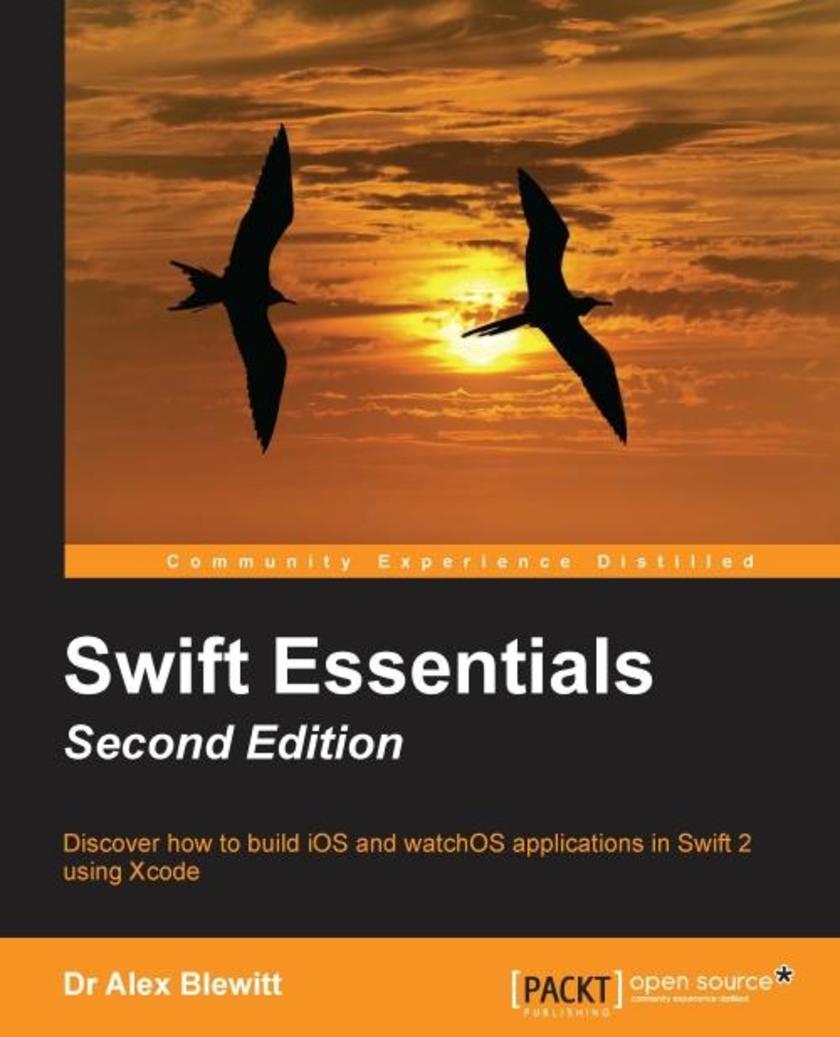
Swift Essentials - Second Edition
¥63.21
Discover how to build iOS and watchOS applications in Swift 2 using XcodeAbout This BookGets you up and running with Swift programming without any prior iOS development experience.A fast paced guide showing best practices and lets you get up to speed with Swift to quickly build your own iOS applicationsA unique practical approach to make your life with Swift easy.Who This Book Is ForAre you interested in learning SwiftDo you want to write iOS applications in SwiftIf yes, then this is the book for you. No prior iOS programming experience is assumed; however, having some experience with any programming language will be beneficial.What You Will LearnDive into Swift and explore its innovative and powerful syntaxWork with Swift in Xcode to get a unique and productive approach to developmentFind out how to create complete iOS applicationsDiscover rapid prototyping with a Swift playgroundGet to know how to use the Swift storyboard to develop multi-page applicationsGet to grips with parsing JSON and XML data from network sourcesBuild a network client for GitHub repositories, with full source code on GitHubIn DetailSwift was considered one of the biggest innovations last year, and certainly with Swift 2 announced at WWDC in 2015, this segment of the developer space will continue to be hot and dominating.This is a fast-paced guide to provide an overview of Swift programming and then walks you through in detail how to write iOS applications. Progress through chapters on custom views, networking, parsing and build a complete application as a Git repository, all by using Swift as the core languageStyle and approachThis fast-paced practical guide will quickly give you hands-on experience with all the features of Swift programming. Following the practical examples in the book will help you successfully create your own iOS applications.
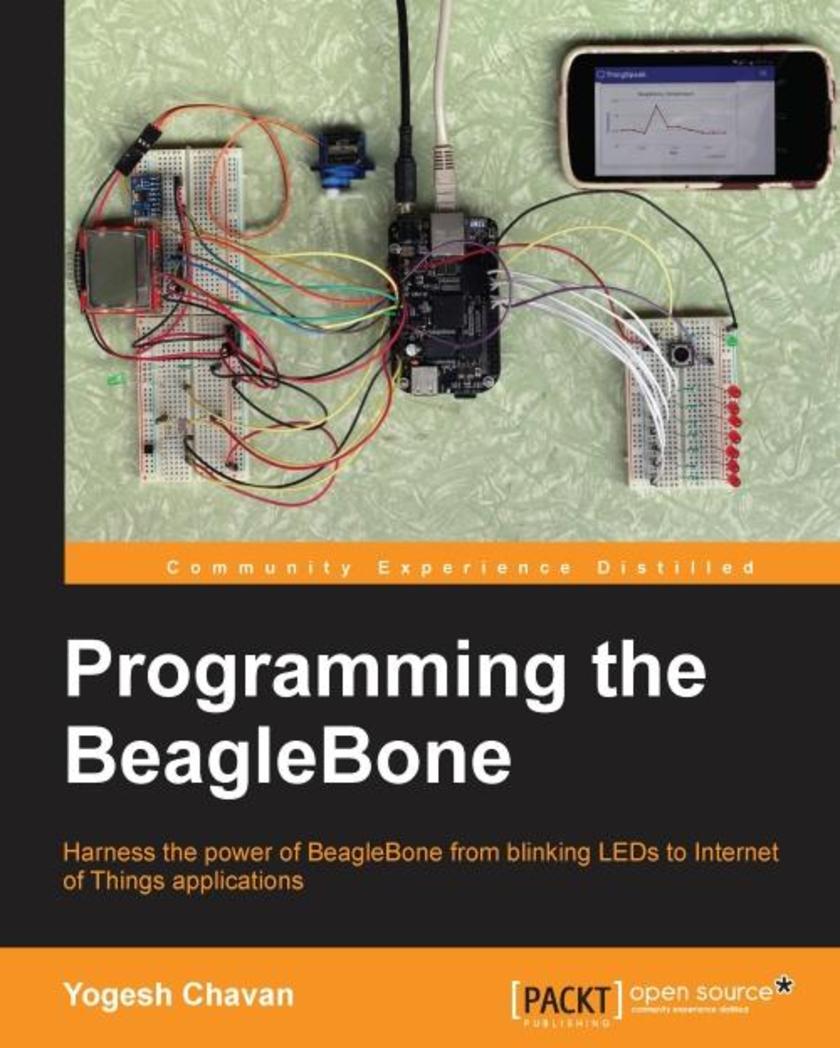
Programming the BeagleBone
¥54.49
Master BeagleBone programming by doing simple electronics and Internet of Things projectsAbout This BookQuickly develop electronics projects that interact with Internet applications using JavaScript and PythonLearn about electronics components such as sensors and motors, and how to communicate with them by writing programsA step-by-step guide to explore the exciting world of BeagleBone—from connecting BeagleBone to doing electronics projects and creating IoT applicationsWho This Book Is ForIf you want to learn programming on embedded systems with BeagleBone by doing simple electronics projects, this book is for you. This book is also helpful to BeagleBone owners who want to quickly implement small-scale home automation solutions. It is assumed that you have familiarity with C and Python programming. Some familiarity with electronics is helpful but not essential.What You Will LearnConnect your BeagleBone to a computer in different ways and get the Cloud9 IDE running to quick-start programming on the BeagleBoneGet to know about BeagleBone extension pins such as GPIO and how to connect various electronics components with BeagleBoneRead and write to various electronics components such as LED, Push-button, sensors, and motorsGrasp in-depth theory on Analog, PWM, and BUS programming and the electronics components used in programsHandle data to and from various BUS supporting modules such as UART, I2C, and SPI using the Adafruit BBIO Python libraryWrite real-life IoT applications in JavaScript and Python such as shooting an e-mail on overheat and controlling a servo motor remotelyMake use of online free cloud services to store and analyze sensor data collected on the BeagleBoneDiscover what else can be done using the BeagleBoneGet to grips with embedded system BUS communicationIn DetailThe whole world is moving from desktop computers to smartphones and embedded systems. We are moving towards utilizing Internet of Things (IoT). An exponential rise in the demand for embedded systems and programming in the last few years is driving programmers to use embedded development boards such as Beaglebone.BeagleBone is an ultra-small, cost-effective computer that comes with a powerful hardware. It runs a full-fledged Debian Linux OS and provides numerous electronics solutions. BeagleBone is open source and comes with an Ethernet port, which allows you to deploy IoT projects without any additions to the board. It provides plenty of GPIO, Anlaog pins, and UART, I2C, SPI pins which makes it the right choice to perform electronics projects. This gives you all the benefits of Linux kernel such as multitasking, multiusers, and extensive device driver support. This allows you to do programming in many languages including high-level languages such as JavaScript and Python.This book aims to exploit the hardware and software capabilities of BeagleBone to create real-life electronics and IoT applications quickly. It is divided into two parts. The first part covers JavaScript programs. The second part provides electronics projects and IoT applications in Python.First, you will learn to use BeagleBone as tool to write useful applications on embedded systems. Starting with the basics needed to set up BeagleBone and the Cloud9 IDE, this book covers interfacing with various electronics components via simple programs. The electronics theory related to these components is then explained in depth before you use them in a program. Finally, the book helps you create some real-life IoT applications.Style and approachAn easy-to-follow guide full of real-world electronics programs and quick troubleshooting tips using BeagleBone. All the required electronics concepts are explained in detail before using them in a program and all programs are explained in depth. Most of the theory is covered in the first part; while the second part gives you some quick programs.
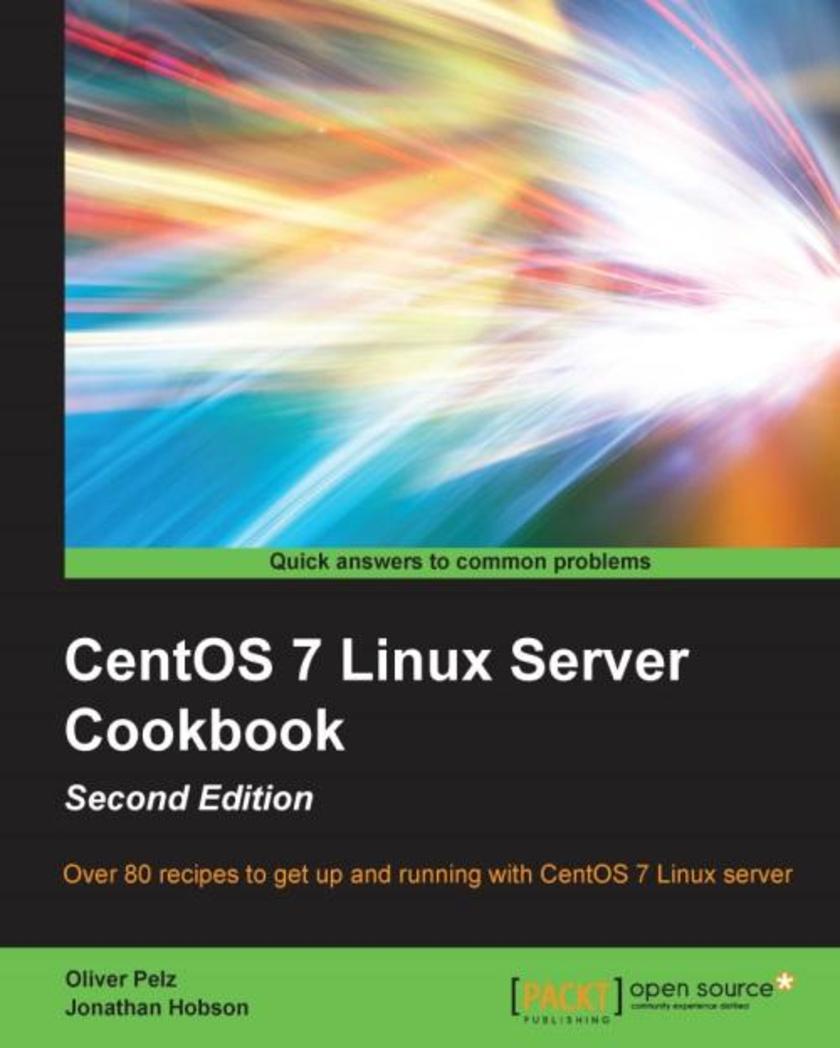
CentOS 7 Linux Server Cookbook - Second Edition
¥90.46
Over 80 recipes to get up and running with CentOS 7 Linux serverAbout This BookA practical guide to install, configure, administer and maintain CentOS 7 serversAn in-depth guide to the CentOS 7 operating system, exploring its various new features and changes in server administrationPresents tricks and solutions to tackle common server issues with the help of practical examples and real-life scenariosWho This Book Is ForThis book is targeted at beginner and more experienced system administrators alike who want to use CentOS as their server solution. Readers do not need much pre-knowledge or experience at all to work with this book.What You Will LearnInstall and configure CentOS 7 Linux server system from scratch using normal and advanced methodsMaintain a performance-based and secure server solution by deploying expert configuration advice and managing software packagesMonitor, manage and develop your server's file system to maintain a stable performanceGain best practice methods on sharing files and resources through a networkInstall and configure common standard services such as web, mail, FTP, database and domain name server technologiesIntroduce you to the world of operating-system-level virtualization using the Docker platform.Understand the fundamentals of the Security-Enhanced Linux access control architectureMonitor your IT infrastructure using NagiosIn DetailThis book will provide you with a comprehensive series of starting points that will give you direct access to the inner workings of the latest CentOS version 7 and help you trim the learning curve to master your server.You will begin with the installation and basic configuration of CentOS 7, followed by learning how to manage your system, services and software packages. You will then gain an understanding of how to administer the file system, secure access to your server and configure various resource sharing services such as file, printer and DHCP servers across your network. Further on, we cover advanced topics such as FTP services, building your own DNS server, running database servers, and providing mail and web services. Finally, you will get a deep understanding of SELinux and you will learn how to work with Docker operating-system virtualization and how to monitor your IT infrastructure with Nagios.By the end of this book, you will have a fair understanding of all the aspects of configuring, implementing and administering CentOS 7 Linux server and how to put it in control.Style and approachThis book is a practical reference guide with hands-on examples and solutions to real-world administration problems. It covers in-depth and comprehensive information on CentOS 7 and its new features.

Building Telephony Systems with OpenSIPS - Second Edition
¥80.65
Build high-speed and highly scalable telephony systems using OpenSIPSAbout This BookInstall and configure OpenSIPS to authenticate, route, bill, and monitor VoIP callsGain a competitive edge using the most scalable VoIP technologyDiscover the latest features of OpenSIPS with practical examples and case studiesWho This Book Is ForIf you want to understand how to build a SIP provider from scratch using OpenSIPS, then this book is ideal for you. It is beneficial for VoIP providers, large enterprises, and universities. This book will also help readers who were using OpenSER but are now confused with the new OpenSIPS.Telephony and Linux experience will be helpful to get the most out of this book but is not essential. Prior knowledge of OpenSIPS is not assumed.What You Will LearnLearn to prepare and configure a Linux system for OpenSIPSFamiliarise yourself with the installation and configuration of OpenSIPSUnderstand how to set a domain and create users/extensionsConfigure SIP endpoints and make calls between themMake calls to and from the PSTN and create access control lists to authorize callsInstall a graphical user interface to simplify the task of provisioning user and system informationImplement an effective billing system with OpenSIPSMonitor and troubleshoot OpenSIPS to keep it running smoothlyIn DetailOpenSIPS is a multifunctional, multipurpose signalling SIP server. SIP (Session Initiation Protocol) is nowadays the most important VoIP protocol and OpenSIPS is the open source leader in VoIP platforms based on SIP. OpenSIPS is used to set up SIP Proxy servers. The purpose of these servers is to receive, examine, and classify SIP requests. The whole telecommunication industry is changing to an IP environment, and telephony as we know it today will completely change in less than ten years. SIP is the protocol leading this disruptive revolution and it is one of the main protocols on next generation networks. While a VoIP provider is not the only kind of SIP infrastructure created using OpenSIPS, it is certainly one of the most difficult to implement.This book will give you a competitive edge by helping you to create a SIP infrastructure capable of handling tens of thousands of subscribers.Starting with an introduction to SIP and OpenSIPS, you will begin by installing and configuring OpenSIPS. You will be introduced to OpenSIPS Scripting language and OpenSIPS Routing concepts, followed by comprehensive coverage of Subscriber Management. Next, you will learn to install, configure, and customize the OpenSIPS control panel and explore dialplans and routing. You will discover how to manage the dialog module, accounting, NATTraversal, and other new SIP services. The final chapters of the book are dedicated to troubleshooting tools, SIP security, and advanced scenarios including TCP/TLS support, load balancing, asynchronous processing, and more.A fictional VoIP provider is used to explain OpenSIPS and by the end of the book, you will have a simple but complete system to run a VoIP provider.Style and approachThis book is a step-by-step guide based on the example of a VoIP provider. You will start with OpenSIPS installation and gradually, your knowledge depth will increase.
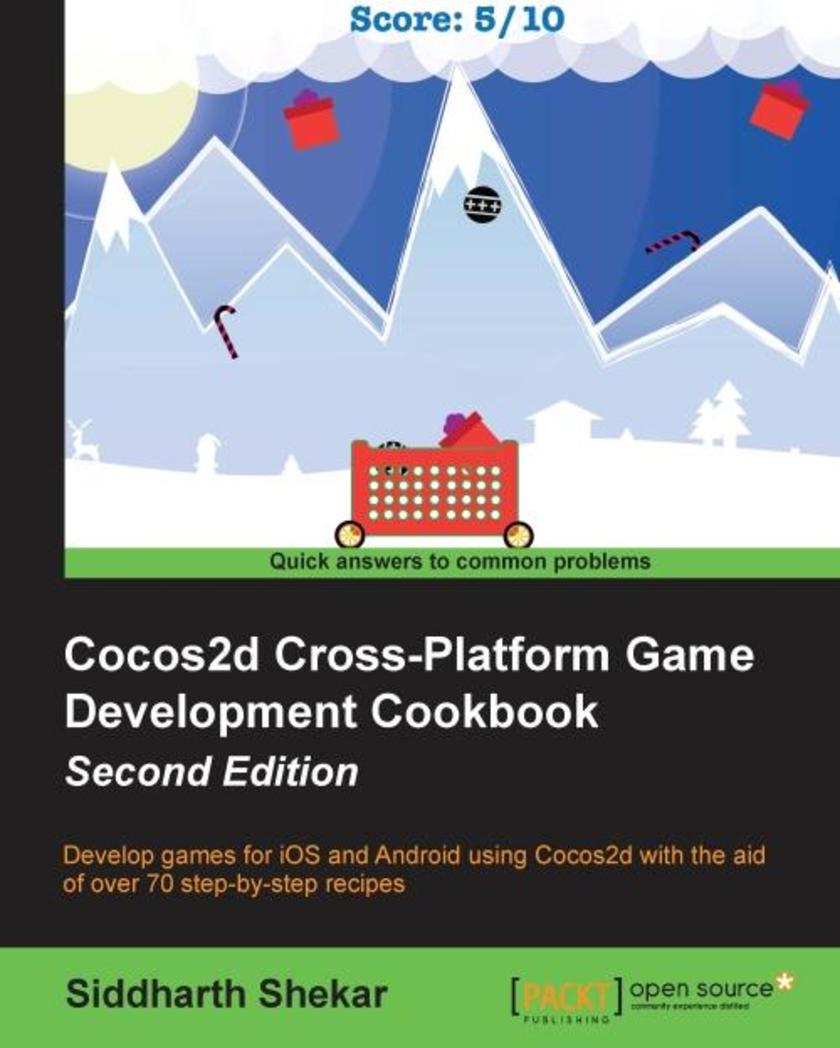
Cocos2d Cross-Platform Game Development Cookbook - Second Edition
¥90.46
Develop games for iOS and Android using Cocos2d with the aid of over 70 step-by-step recipesAbout This BookLearn to efficiently use Cocos2d to develop cross-platform games, and have them work on iOS as well as AndroidGet acquainted with industry-wide professional tools such as Glyph Designer, Texture Packer, and Physics Editor, as well as using the Swift/ Sprite builder implementation of Cocos2dUse the easy-to-follow recipes to develop as well as deploy games to the Playstore and the App StoreWho This Book Is ForThis book is for intermediate game developers and especially the ones who are generally curious to find out what’s new in Cocos2d v 3.3.What You Will LearnBuild custom sprites with custom animations for the gameBuild interactivity into your game by adding gestures and touch interactionsUnderstand AI enemy programming and path finding to make games more excitingAdd physics to your game to make it more lively and interactiveGet familiar with the Swift and Sprite builder implementations along with Objective-C programmingPerform hassle-free deployment of games built in iOS onto AndroidAdd effects and particle systems to make the game more colorfulIn DetailCocos2d is the world’s leading game development framework for developing iOS games. With the introduction of Swift and Spritebuilder, it has become easier than ever to develop the games of your dreams without much effort. With Cocos2d, you can also deploy the game on Android, thereby maximizing profit and reducing development and porting costs.The book starts off with a detailed look at how to implement sprites and animations into your game to make it livelier. You will then learn to add scenes to the game such as the gameplay scene and options scene and create menus and buttons in these scenes, as well as creating transitions between them. From there on, you will get an understanding of how to program user interactions such as tapping, holding, and swiping. You’ll then add accelerometer inputs and physics to the scene, and make objects respond back to the inputs. A game is practically incomplete without audio being added, so this will be covered next.The next section will include ways to add Artificial Intelligence to enemies in the game, allowing them to patrol, chase, and shoot in a projectile manner. You will then learn to use NSUserDefault to save and load game progress, and create and access files using JSON, Plist, and XML files for custom storage and retrieval of data. Then you will learn to add dynamic lighting to your game and will use industry-wide tools such as Texture Packer, Glyph Designer, Physics Editor, Particle Designer, and Sprite Illuminator to create more visually appealing and performance-optimized games.Towards the end of the book, we dive into Apple’s latest programming language—Swift, highlighting the major differences between Objective C and Swift. The book culminates with taking your existing game developed for iOS and porting it to Android, showing you how to install the Android Xcode plugin as well.Style and approachThe book is written in an extremely lucid and step-by-step manner; it can be understood easily by anyone. The topics included are broken down into individual chapters so you can refer to the specific chapter to get answers on the subject you are interested in.
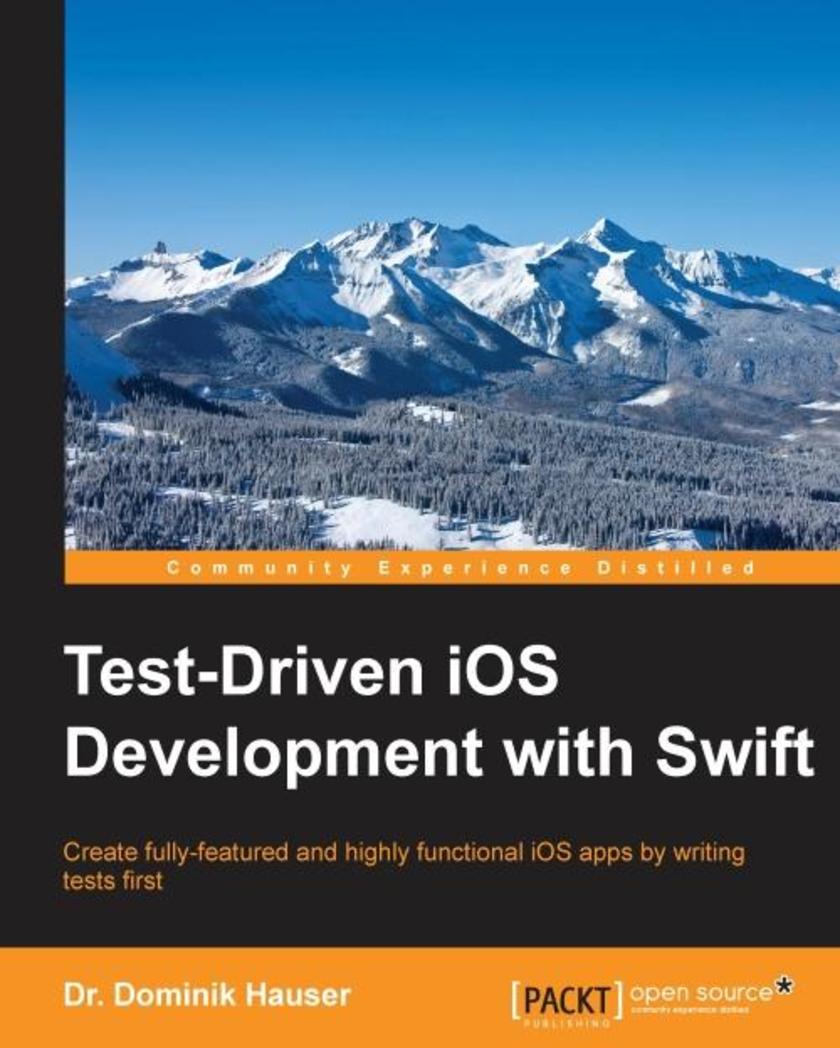
Test-Driven iOS Development with Swift
¥71.93
Create fully-featured and highly functional iOS apps by writing tests firstAbout This BookLearn test-driven principles to help you build apps with fewer bugs and better designsBecome more efficient while working with Swift to move on to your next project faster!Learn how to incorporate all of the principles of test-driven development (TDD) in to your daily programming workflowWho This Book Is ForIf debugging iOS apps is a nerve-racking task for you and you are looking for a fix, this book is for you.What You Will LearnImplement TDD in swift application developmentGet to know the fundamentals, life cycle, and benefits of TDDExplore the tools and frameworks to effectively use TDDDevelop models and controllers driven by testsConstruct the network layer using stubsUse functional tests to ensure the app works as plannedAutomate and streamline the building, analysing, testing, and archiving of your iOS appsIn DetailTest-driven development (TDD) is a proven way to find software bugs early. Writing tests before your code improves the structure and maintainability of your app.Test-driven iOS Development with Swift will help you understand the process of TDD and how it impacts your applications written in Swift. Through practical, real-world examples, you’ll start seeing how to implement TDD in context. We will begin with an overview of your TDD workflow and then deep-dive into unit testing concepts and code cycles. We will showcase the workings of functional tests, which will help you improve the user interface. Finally, you will learn about automating deployments and continuous integration to run an environment.Style and approachThis is an easy-to-follow example-driven tutorial, packed with lots of tips and tricks that explore TDD bit-by-bit in the process of making an iOS application.
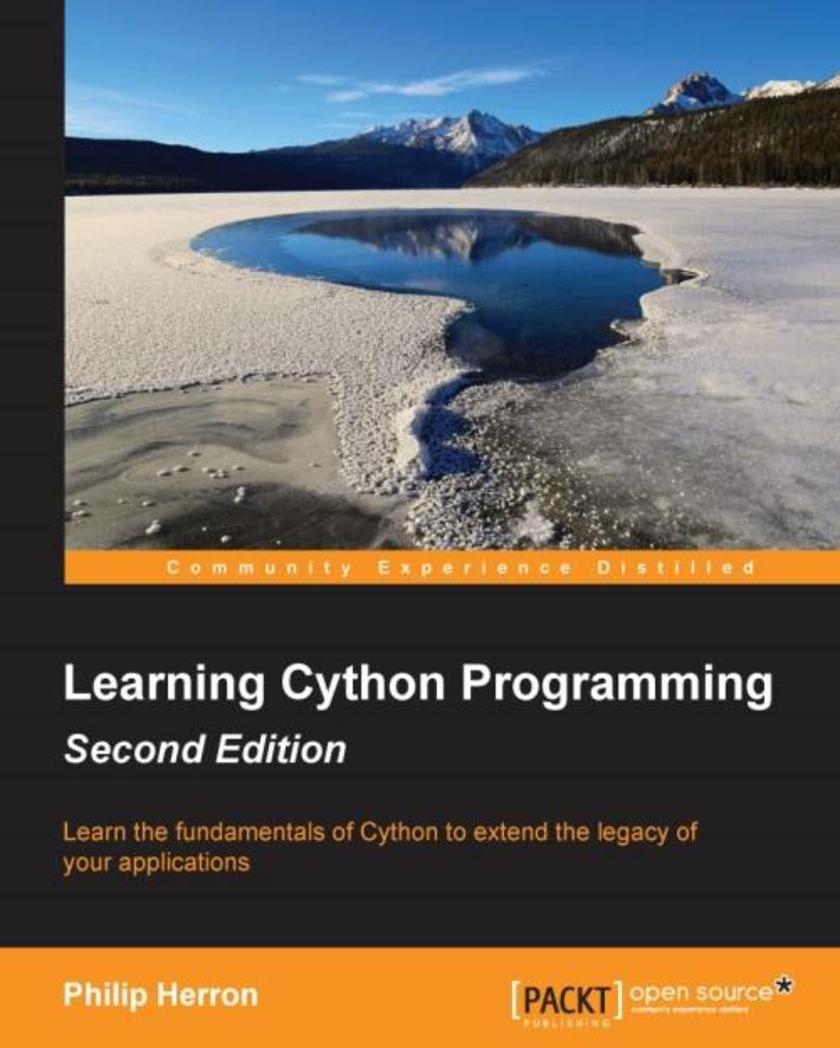
Learning Cython Programming - Second Edition
¥63.21
Learn the fundamentals of Cython to extend the legacy of your applicationsAbout This BookLearn how to extend C applications with pure Python codeGet more from Python – you’ll not only learn Cython, you’ll also unlock a greater understanding of how to harness PythonPacked with tips and tricks that make Cython look easy, dive into this accessible programming guide and find out what happens when you bring C and Python together!Who This Book Is ForThis book is for developers who are familiar with the basics of C and Python programming and wish to learn Cython programming to extend their applications.What You Will LearnReuse Python logging in CMake an IRC bot out of your C applicationExtend an application so you have a web server for rest callsPractice Cython against your C++ codeDiscover tricks to work with Python ConfigParser in CCreate Python bindings for native librariesFind out about threading and concurrency related to GILExpand Terminal Multiplexer Tmux with CythonIn DetailCython is a hybrid programming language used to write C extensions for Python language. Combining the practicality of Python and speed and ease of the C language it’s an exciting language worth learning if you want to build fast applications with ease.This new edition of Learning Cython Programming shows you how to get started, taking you through the fundamentals so you can begin to experience its unique powers.You’ll find out how to get set up, before exploring the relationship between Python and Cython. You’ll also look at debugging Cython, before moving on to C++ constructs, Caveat on C++ usage, Python threading and GIL in Cython. Finally, you’ll learn object initialization and compile time, and gain a deeper insight into Python 3, which will help you not only become a confident Cython developer, but a much more fluent Python developer too.Style and approachThis practical and a fast-paced guide gives you all the information you need to start programming using Cython.
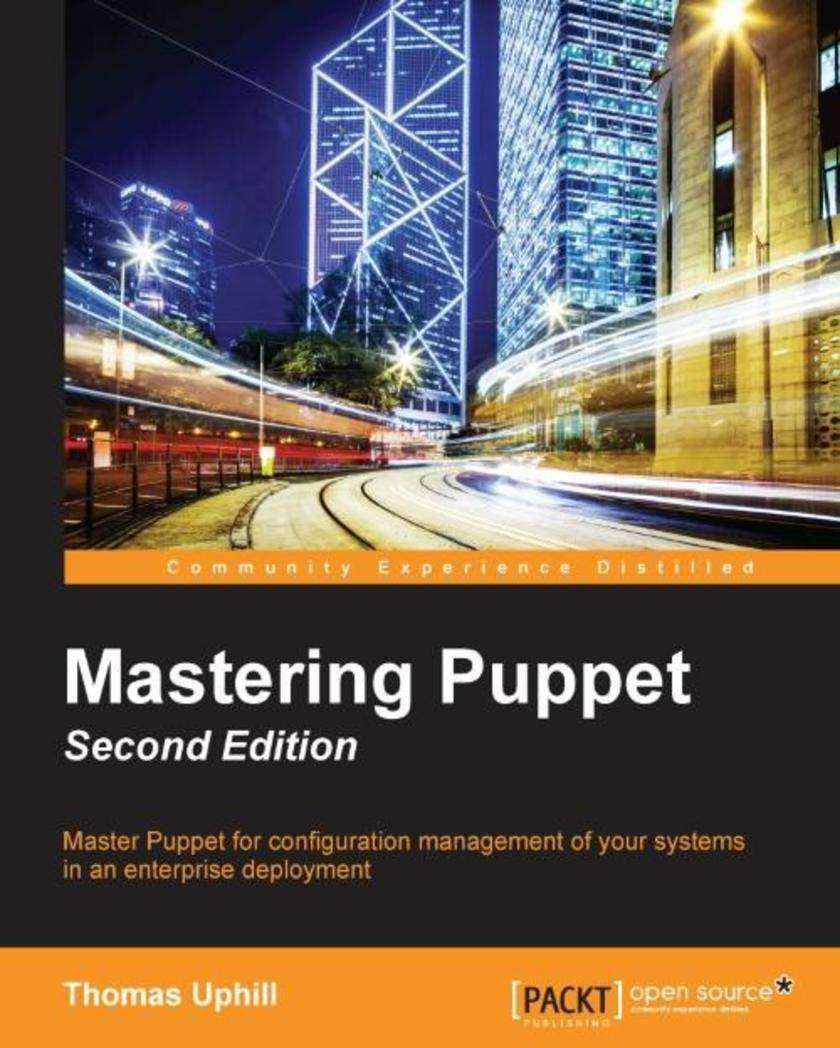
Mastering Puppet - Second Edition
¥90.46
Master Puppet for configuration management of your systems in an enterprise deploymentAbout This BookThis book is an advanced guide to using and deploying Puppet 4 in your organization with a special focus on issues faced in larger enterprise deploymentsFrom an experienced author, learn to deal with scaling, performance, and multiple developers with the help of real-world examplesThis is the most up-to-date guide on Puppet, and covers the advanced concepts of Puppet 4Who This Book Is ForThis book is for those who have intermediate knowledge of Puppet and are looking to deploy it in their environment. Some idea how to write simple modules for configuration management with Puppet is a prerequisite for this book.What You Will LearnScale out your Puppet infrastructure using proxying techniquesAutomate your code promotion workflow using Git and r10kSolve real-world problems using public modules from the Puppet ForgeUse Hiera to separate the data of your configuration from the code of your configurationWrite your own custom facts in RubyExtend Puppet with your own custom facts, modules, and typesUse exported resources to orchestrate change between machinesDebug a puppetserver using Java techniquesIn DetailPuppet is a configuration management system and a language. It was written for and by system administrators to manage large numbers of systems efficiently and prevent configuration drifts.Mastering Puppet deals with the issues faced when scaling out Puppet to handle large numbers of nodes. It will show you how to fit Puppet into your enterprise and allow many developers to work on your Puppet code simultaneously. In addition, you will learn to write custom facts and roll your own modules to solve problems. Next, popular options for performing reporting and orchestration tasks will be introduced in this book. Moving over to troubleshooting techniques, which will be very useful. The concepts presented are useful to any size organization.By the end of the book, you will know how to deal with problems of scale and exceptions in your code, automate workflows, and support multiple developers working simultaneously.Style and approachThis book is a step-wise guide packed with examples to help you configure complex systems in Puppet.
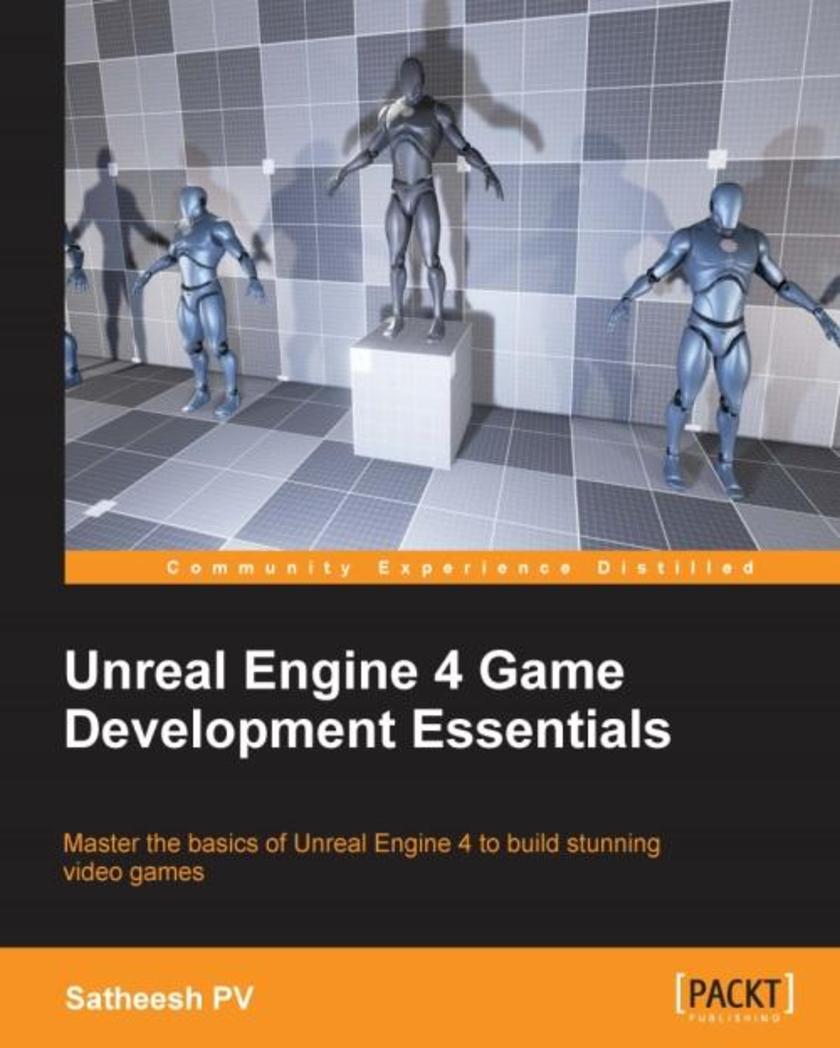
Unreal Engine 4 Game Development Essentials
¥80.65
Master the basics of Unreal Engine 4 to build stunning video gamesAbout This BookGet to grips with the user interface of Unreal Engine 4 and find out more about its various robust featuresCreate dream video games with the help of the different tools Unreal Engine 4 offersCreate video-games and fully utilize the power of Unreal Engine 4 to bring games to life through this step-by-step guideWho This Book Is ForIf you have a basic understanding of working on a 3D environment and you are interested in video game development, then this book is for you. A solid knowledge of C++ will come in handy.What You Will LearnDownload both the binary and source version of Unreal Engine 4 and get familiar with the UIGet to know more about the Material Editor and how it worksAdd a post process to the scene and alter it to get a unique look for your sceneAcquaint yourself with the unique and exclusive feature of Unreal Engine 4—BlueprintsFind out more about Static and Dynamic lighting and the difference between various lightsUse Matinee to create cut scenesCreate a health bar for the player with the use of Unreal Motion Graphics (UMG)Get familiar with Cascade Particle EditorIn DetailUnreal Engine 4 is a complete suite of game development tools that gives you power to develop your game and seamlessly deploy it to iOS and Android devices. It can be used for the development of simple 2D games or even stunning high-end visuals. Unreal Engine features a high degree of portability and is a tool used by many game developers today.This book will introduce you to the very popular Unreal 4 engine with hands-on instructions to build stunning video games. You will begin by creating a new project or prototype by learning the essentials of Unreal engine, then you’ll get an understanding of how the World Browser can help to improve performance of our game. Next, we’ll create a level of detailed models and materials to further improve performance. After that, you’ll see how to import textures, create different materials, and see what materials can do in terms of post-processing. Finally, you will get acquainted with the Paper2D tool and the blueprints system to further increase our project's performance with Engine’s scalability tools.Style and approachThis step-by-step guide will help you gain practical knowledge about Unreal Engine through detailed de*ions of all the tools offered by Unreal Engine.
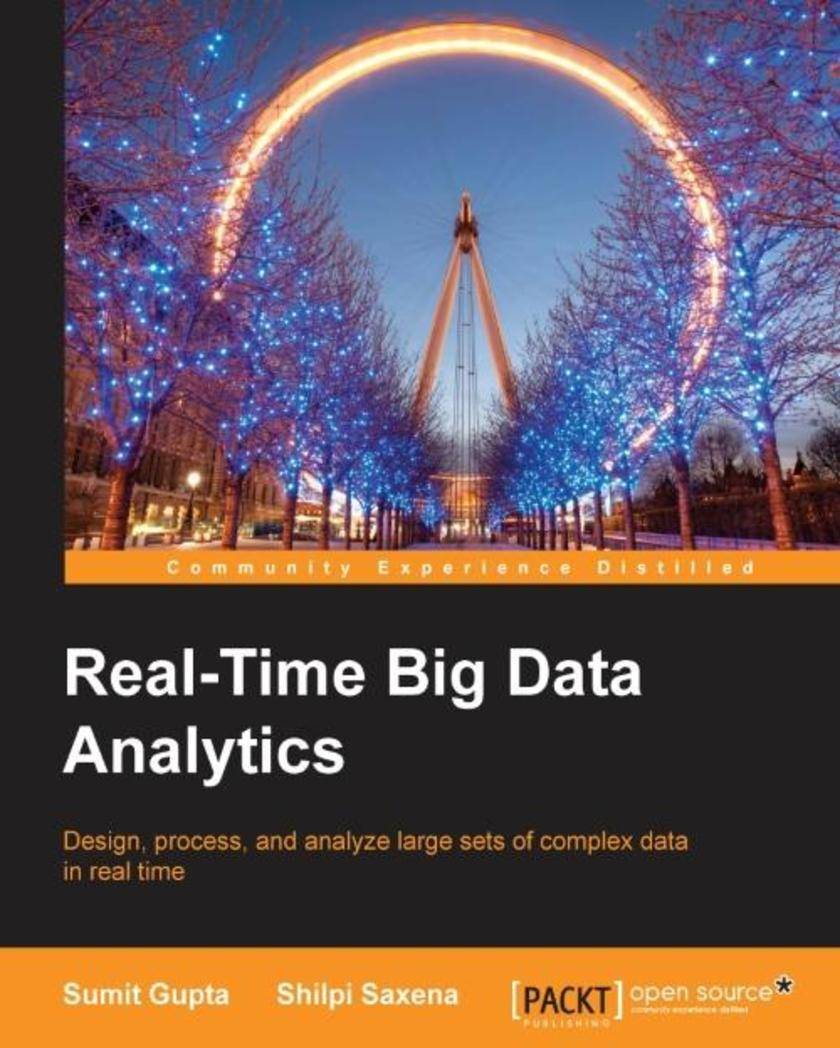
Real-Time Big Data Analytics
¥80.65
Design, process, and analyze large sets of complex data in real timeAbout This BookGet acquainted with transformations and database-level interactions, and ensure the reliability of messages processed using StormImplement strategies to solve the challenges of real-time data processingLoad datasets, build queries, and make recommendations using Spark SQLWho This Book Is ForIf you are a Big Data architect, developer, or a programmer who wants to develop applications/frameworks to implement real-time analytics using open source technologies, then this book is for you.What You Will LearnExplore big data technologies and frameworksWork through practical challenges and use cases of real-time analytics versus batch analyticsDevelop real-word use cases for processing and analyzing data in real-time using the programming paradigm of Apache StormHandle and process real-time transactional dataOptimize and tune Apache Storm for varied workloads and production deploymentsProcess and stream data with Amazon Kinesis and Elastic MapReducePerform interactive and exploratory data analytics using Spark SQLDevelop common enterprise architectures/applications for real-time and batch analyticsIn DetailEnterprise has been striving hard to deal with the challenges of data arriving in real time or near real time.Although there are technologies such as Storm and Spark (and many more) that solve the challenges of real-time data, using the appropriate technology/framework for the right business use case is the key to success. This book provides you with the skills required to quickly design, implement and deploy your real-time analytics using real-world examples of big data use cases.From the beginning of the book, we will cover the basics of varied real-time data processing frameworks and technologies. We will discuss and explain the differences between batch and real-time processing in detail, and will also explore the techniques and programming concepts using Apache Storm.Moving on, we’ll familiarize you with “Amazon Kinesis” for real-time data processing on cloud. We will further develop your understanding of real-time analytics through a comprehensive review of Apache Spark along with the high-level architecture and the building blocks of a Spark program.You will learn how to transform your data, get an output from transformations, and persist your results using Spark RDDs, using an interface called Spark SQL to work with Spark.At the end of this book, we will introduce Spark Streaming, the streaming library of Spark, and will walk you through the emerging Lambda Architecture (LA), which provides a hybrid platform for big data processing by combining real-time and precomputed batch data to provide a near real-time view of incoming data.Style and approachThis step-by-step is an easy-to-follow, detailed tutorial, filled with practical examples of basic and advanced features.Each topic is explained sequentially and supported by real-world examples and executable code snippets.
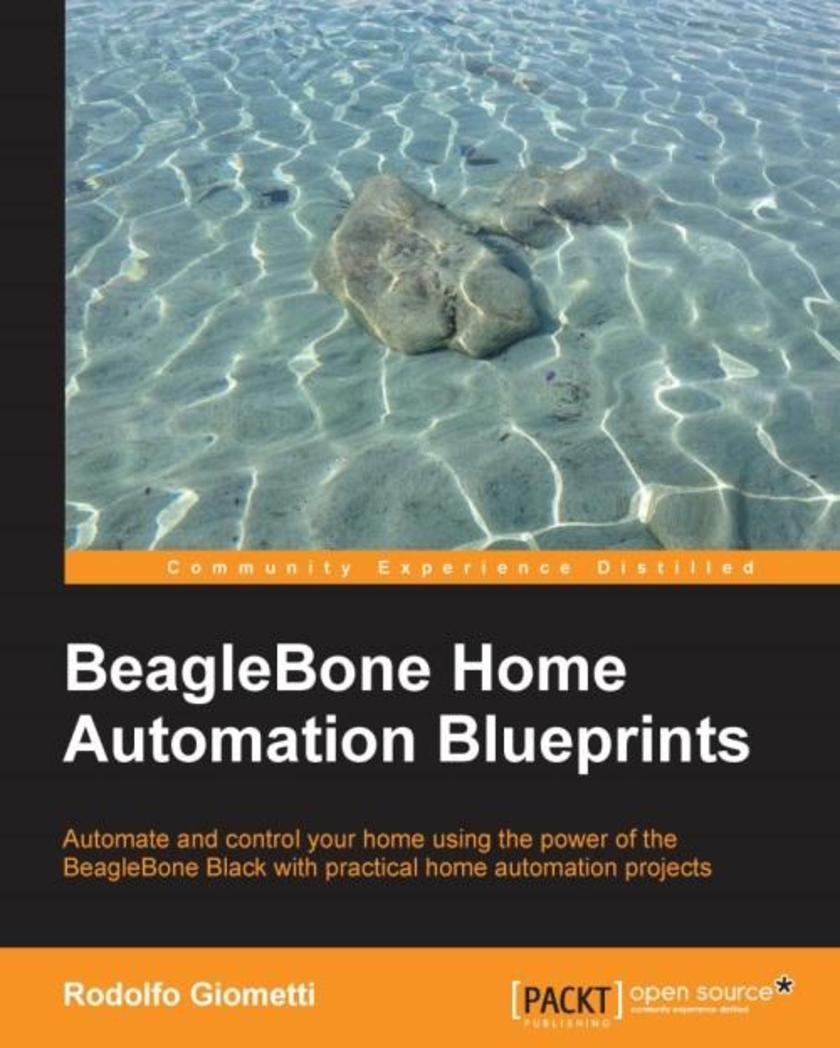
BeagleBone Home Automation Blueprints
¥80.65
Automate and control your home using the power of the BeagleBone Black with practical home automation projectsAbout This BookBuild, set up, and develop your circuits via step-by-step tutorial of practical examples, from initial board setup to device driver managementGet access to several kinds of computer peripherals to monitor and control your domestic environment using this guideThis book is spread across 10 chapters all focused on one practical home automation projectWho This Book Is ForThis book is for developers who know how to use BeagleBone and are just above the “beginner” level. If you want to learn to use embedded machine learning capabilities, you should have some experience of creating simple home automation projects.What You Will LearnBuild a CO (and other gas) sensor with a buzzer/LED alarm to signal high concentrationsLog environment data and plot it in a fancy mannerDevelop a simple web interface with a LAMP platformPrepare complex web interfaces in JavaScript and get to know how to stream video data from a webcamUse APIs to get access to a Google Docs account or a WhatsApp/Facebook account to manage a home automation systemAdd custom device drivers to manage an LED with different blinking frequenciesDiscover how to work with electronic components to build small circuitsUse an NFS, temperature sensor, relays, and other peripherals to monitor and control your surroundingsIn DetailBeagleBone is a microboard PC that runs Linux. It can connect to the Internet and can run OSes such as Android and Ubuntu. BeagleBone is used for a variety of different purposes and projects, from simple projects such as building a thermostat to more advanced ones such as home security systems.Packed with real-world examples, this book will provide you with examples of how to connect several sensors and an actuator to the BeagleBone Black. You’ll learn how to give access to them, in order to realize simple-to-complex monitoring and controlling systems that will help you take control of the house. You will also find software examples of implementing web interfaces using the classical PHP/HTML pair with JavaScript, using complex APIs to interact with a Google Docs account, WhatsApp, or Facebook. This guide is an invaluable tutorial if you are planning to use a BeagleBone Black in a home automation project.Style and approachThis step-by-step guide contains several home automation examples that can be used as base projects for tons of other home automation and control systems. Through clear, concise examples based on real-life situations, you will quickly get to grips with the core concepts needed to develop home automation applications with the BeagleBone Black using both the C language and high-level *ing languages such as PHP, Python, and JavaScript.
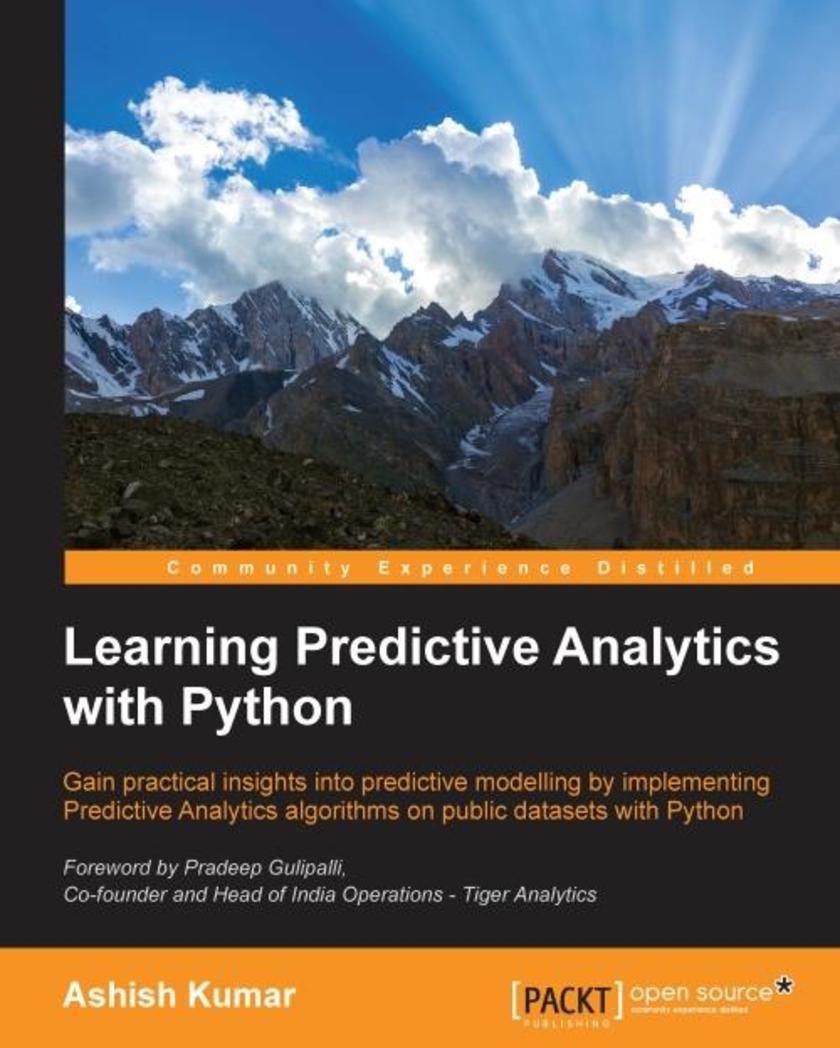
Learning Predictive Analytics with Python
¥90.46
Gain practical insights into predictive modelling by implementing Predictive Analytics algorithms on public datasets with PythonAbout This BookA step-by-step guide to predictive modeling including lots of tips, tricks, and best practicesGet to grips with the basics of Predictive Analytics with PythonLearn how to use the popular predictive modeling algorithms such as Linear Regression, Decision Trees, Logistic Regression, and ClusteringWho This Book Is ForIf you wish to learn how to implement Predictive Analytics algorithms using Python libraries, then this is the book for you. If you are familiar with coding in Python (or some other programming/statistical/*ing language) but have never used or read about Predictive Analytics algorithms, this book will also help you. The book will be beneficial to and can be read by any Data Science enthusiasts. Some familiarity with Python will be useful to get the most out of this book, but it is certainly not a prerequisite.What You Will LearnUnderstand the statistical and mathematical concepts behind Predictive Analytics algorithms and implement Predictive Analytics algorithms using Python librariesAnalyze the result parameters arising from the implementation of Predictive Analytics algorithmsWrite Python modules/functions from scratch to execute segments or the whole of these algorithmsRecognize and mitigate various contingencies and issues related to the implementation of Predictive Analytics algorithmsGet to know various methods of importing, cleaning, sub-setting, merging, joining, concatenating, exploring, grouping, and plotting data with pandas and numpyCreate dummy datasets and simple mathematical simulations using the Python numpy and pandas librariesUnderstand the best practices while handling datasets in Python and creating predictive models out of themIn DetailSocial Media and the Internet of Things have resulted in an avalanche of data. Data is powerful but not in its raw form - It needs to be processed and modeled, and Python is one of the most robust tools out there to do so. It has an array of packages for predictive modeling and a suite of IDEs to choose from. Learning to predict who would win, lose, buy, lie, or die with Python is an indispensable skill set to have in this data age.This book is your guide to getting started with Predictive Analytics using Python. You will see how to process data and make predictive models from it. We balance both statistical and mathematical concepts, and implement them in Python using libraries such as pandas, scikit-learn, and numpy.You’ll start by getting an understanding of the basics of predictive modeling, then you will see how to cleanse your data of impurities and get it ready it for predictive modeling. You will also learn more about the best predictive modeling algorithms such as Linear Regression, Decision Trees, and Logistic Regression. Finally, you will see the best practices in predictive modeling, as well as the different applications of predictive modeling in the modern world.Style and approachAll the concepts in this book been explained and illustrated using a dataset, and in a step-by-step manner. The Python code snippet to implement a method or concept is followed by the output, such as charts, dataset heads, pictures, and so on. The statistical concepts are explained in detail wherever required.
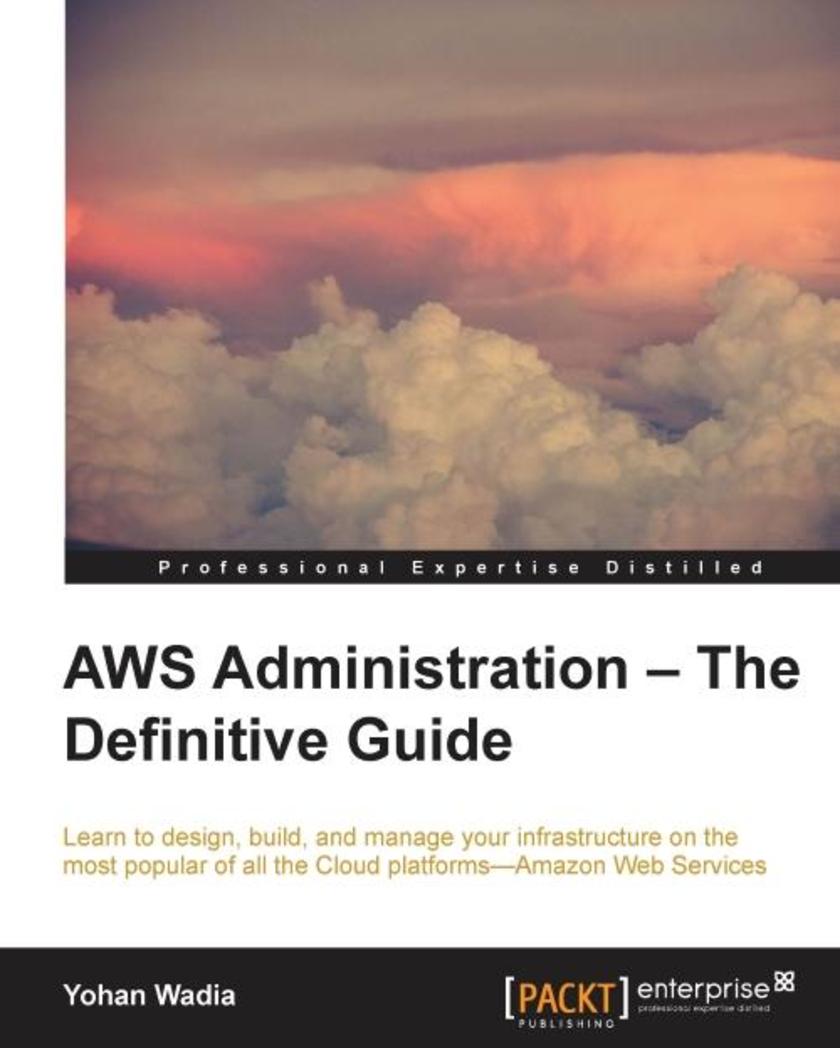
AWS Administration – The Definitive Guide
¥80.65
Learn to design, build, and manage your infrastructure on the most popular of all the Cloud platforms—Amazon Web ServicesAbout This BookLearn how to leverage various Amazon Web Services (AWS) components and services to build a secure, reliable, and robust environment to host your applications onDeep dive into the core AWS service offerings with hands-on tutorials, real-world use case scenarios, and best practicesA self-paced, systematic, and step-by-step guide to learning and implementing AWS in your own environmentWho This Book Is ForThis book is for those who want to learn and leverage AWS. Although no prior experience with AWS is required, it is recommended that you have some hands-on experienceofLinux, Web Services, and basic networkingWhat You Will LearnA brief introduction to Cloud Computing and AWS accompanied by steps to sign up for your first AWS accountCreate and manage users, groups, and permissions using AWSS Identity and Access Management servicesGet started with deploying and accessing EC2 instances, working with EBS Volumes and SnapshotsCustomize and create your very own Amazon Machine ImageDesign and deploy your instances on a highly secured, network isolated environment using Amazon VPCEffectively monitor your AWS environment using specialized alarms, custom monitoring metrics, and much moreExplore the various benefits of Database-as-a-Service offerings and leverage them using Amazon RDS and Amazon DynamoDBTake an in-depth look at what’s new with AWS, including EC2 Container Service and Elastic File SystemIn DetailAWS is at the forefront of Cloud Computing today. Many businesses are moving away from traditional datacenters and toward AWS because of its reliability, vast service offerings, lower costs, and high rate of innovation. Because of its versatility and flexible design, AWS can be used to accomplish a variety of simple and complicated tasks such as hosting multitier websites, running large scale parallel processing, content delivery, petabyte storage and archival, and lots more.Whether you are a seasoned sysadmin or a rookie, this book will provide you with all the necessary skills to design, deploy, and manage your applications on the AWS cloud platform. The book guides you through the core AWS services such as IAM, EC2, VPC, RDS, and S3 using a simple real world application hosting example that you can relate to. Each chapter is designed to provide you with the most information possible about a particular AWS service coupled with easy to follow hands-on steps, best practices, tips, and recommendations.By the end of the book, you will be able to create a highly secure, fault tolerant, and scalable environment for your applications to run on.Style and approach This in-depth and insightful guide is filled with easy-to-follow examples, real-world use cases, best practices, and recommendations that will help you design and leverage AWS.
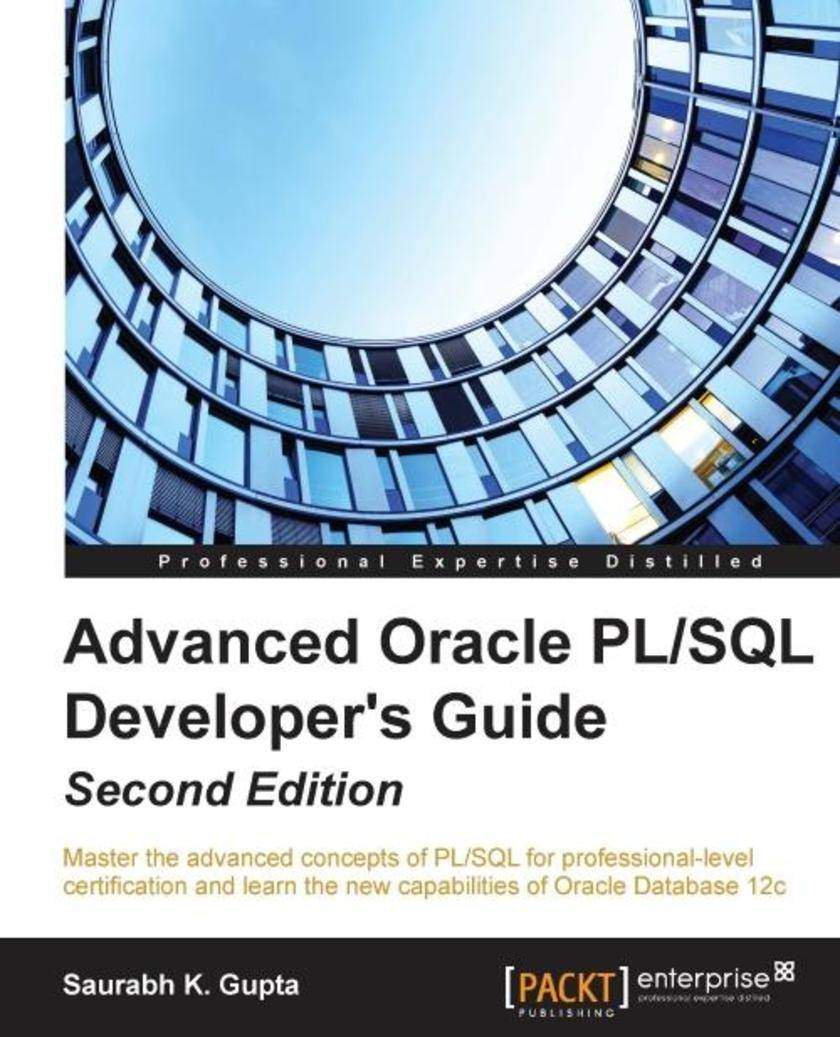
Advanced Oracle PL/SQL Developer's Guide - Second Edition
¥107.90
Master the advanced concepts of PL/SQL for professional-level certification and learn the new capabilities of Oracle Database 12cAbout This BookLearn advanced application development features of Oracle Database 12c and prepare for the 1Z0-146 examinationBuild robust and secure applications in Oracle PL/SQL using the best practicesPacked with feature demonstrations and illustrations that will help you learn and understand the enhanced capabilities of Oracle Database 12cWho This Book Is ForThis book is for Oracle developers responsible for database management. Readers are expected to have basic knowledge of Oracle Database and the fundamentals of PL/SQL programming. Certification aspirants can use this book to prepare for 1Z0-146 examination in order to be an Oracle Certified Professional in Advanced PL/SQL.What You Will LearnLearn and understand the key SQL and PL/SQL features of Oracle Database 12cUnderstand the new Multitenant architecture and Database In-Memory option of Oracle Database 12cKnow more about the advanced concepts of the Oracle PL/SQL language such as external procedures, securing data using Virtual Private Database (VPD), SecureFiles, and PL/SQL code tracing and profilingImplement Virtual Private Databases to prevent unauthorized data accessTrace, analyze, profile, and debug PL/SQL code while developing database applicationsIntegrate the new application development features of Oracle Database 12c with the current conceptsDiscover techniques to analyze and maintain PL/SQL codeGet acquainted with the best practices of writing PL/SQL code and develop secure applicationsIn DetailOracle Database is one of the most popular databases and allows users to make efficient use of their resources and to enhance service levels while reducing the IT costs incurred. Oracle Database is sometimes compared with Microsoft SQL Server, however, Oracle Database clearly supersedes SQL server in terms of high availability and addressing planned and unplanned downtime. Oracle PL/SQL provides a rich platform for application developers to code and build scalable database applications and introduces multiple new features and enhancements to improve development experience.Advanced Oracle PL/SQL Developer's Guide, Second Edition is a handy technical reference for seasoned professionals in the database development space. This book starts with a refresher of fundamental concepts of PL/SQL, such as anonymous block, subprograms, and exceptions, and prepares you for the upcoming advanced concepts. The next chapter introduces you to the new features of Oracle Database 12c, not limited to PL/SQL. In this chapter, you will understand some of the most talked about features such as Multitenant and Database In-Memory. Moving forward, each chapter introduces advanced concepts with the help of demonstrations, and provides you with the latest update from Oracle Database 12c context. This helps you to visualize the pre- and post-applications of a feature over the database releases. By the end of this book, you will have become an expert in PL/SQL programming and will be able to implement advanced concepts of PL/SQL for efficient management of Oracle Database.Style and approach The book follows the structure of the Oracle Certification examination but doesn't restrict itself to the exam objectives. Advanced concepts have been explained in an easy-to-understand style, supported with feature demonstrations and case illustrations.
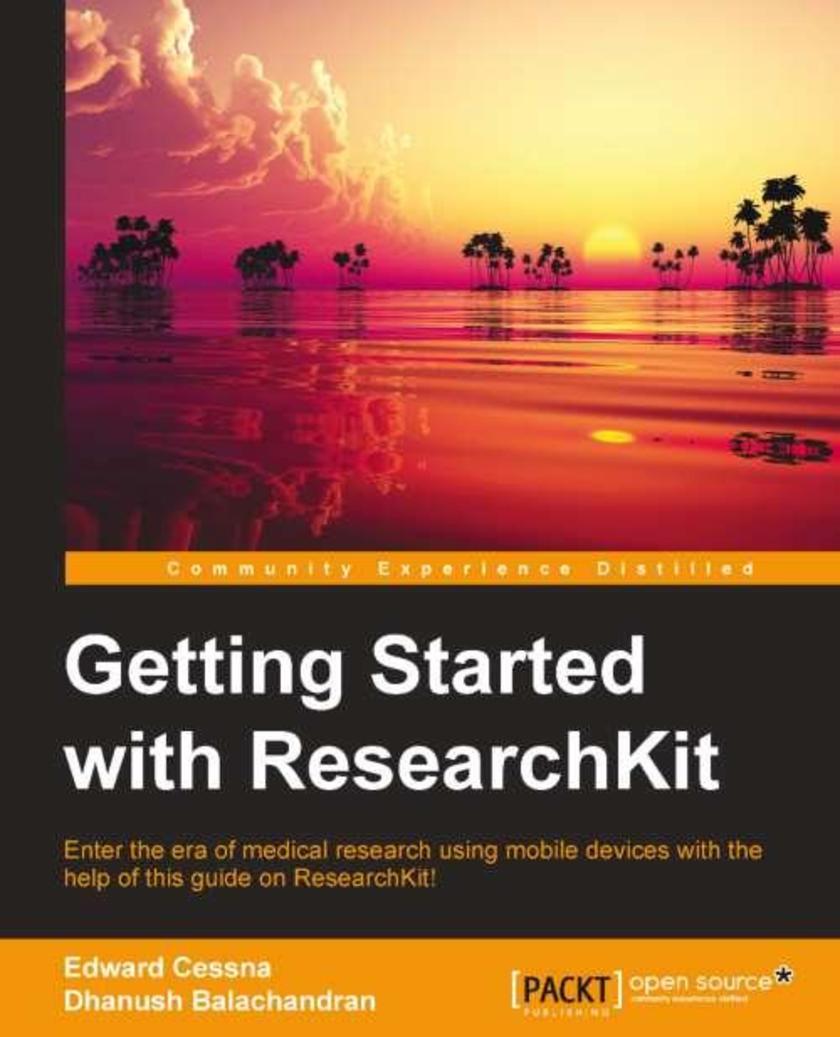
Getting Started with ResearchKit
¥80.65
Enter the era of medical research using mobile devices with the help of this guide on ResearchKit!About This BookCreate a simple clinical research app using most aspects of ResearchKitBuild a simple survey with various data types with the results printed on the screen.A step-by-step guide introducing Apple's ResearchKit and techniques to incorporate it into various apps.Who This Book Is ForThis book is aimed at medical researchers with basic iOS coding knowledge and iOS developers looking to create clinical research apps.What You Will LearnLearn to create customized consent formGet introduced to two backend services: a simple backend server using Sinatra and Sage BridgeBuild a custom task (a conditional survey example) and a navigable taskGet an Overview of ResearchKit's open source repository and App CoreInteraction with the hardware of the device including the gyro and the motion sensorsLearn the basics of this revolutionary technologyGet introduced to the barebones app and learn to write your first codeIn DetailResearchKit is an open source software development framework from Apple that lets you easily create mobile applications for clinical research studies. ResearchKit provides you the ability to orchestrate the administration of tasks and recording of the results. ResearchKit provides tasks in order to perform informed consent, active tasks, and surveys.Starting with the basics of the ResearchKit framework, this books walks you through the steps of creating iOS applications that could serve as the basis of a clinical research mobile app.This book will introduce readers to ResearchKit and how to turn your iPhone into into a clinical research tool. The book will start off by installing and building the research framework in line with the researcher's needs; during this, the reader will learn to embed ResearchKit in the application and create a small task.After this, the book will go a little deeper into creating modules for surveys, consents, and so on. The book will also cover the various aspects of privacy and security with regard to participant data, and how to build dashboards for visualizing medical data and results in line with the researcher's requirements: data backends, JSON serialization and deserialization, and so on.Readers will be able to fully utilize ResearchKit for medical research, will be able to get more and more patients to participate in their surveys, and will gain insights from the surveys using the dashboards created.Style and approachA hands-on guide with ample screenshots for you to follow and learn about ResearchKit. Each topic is explained sequentially and placed in context so that you can get a better understanding of every step in the process of creating clinical research apps.
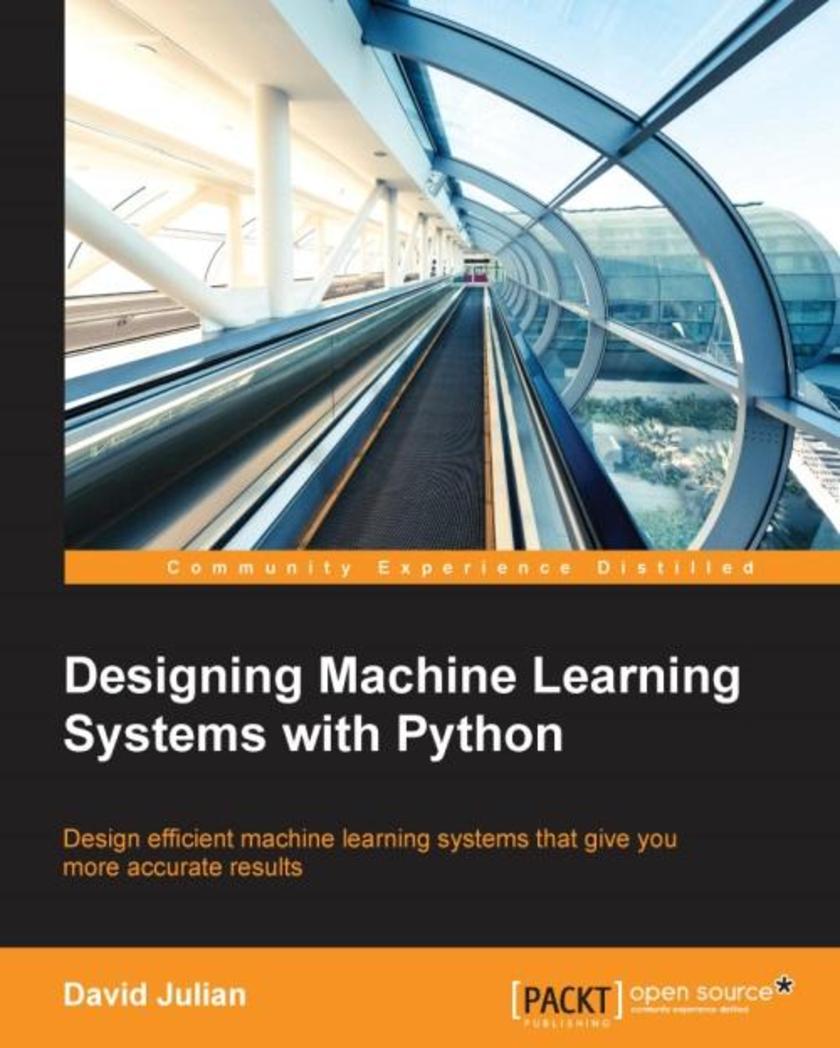
Designing Machine Learning Systems with Python
¥80.65
Design efficient machine learning systems that give you more accurate results About This Book Gain an understanding of the machine learning design process Optimize machine learning systems for improved accuracy Understand common programming tools and techniques for machine learning Develop techniques and strategies for dealing with large amounts of data from a variety of sources Build models to solve unique tasks Who This Book Is For This book is for data scientists, scientists, or just the curious. To get the most out of this book, you will need to know some linear algebra and some Python, and have a basic knowledge of machine learning concepts. What You Will Learn Gain an understanding of the machine learning design process Optimize the error function of your machine learning system Understand the common programming patterns used in machine learning Discover optimizing techniques that will help you get the most from your data Find out how to design models uniquely suited to your task In Detail Machine learning is one of the fastest growing trends in modern computing. It has applications in a wide range of fields, including economics, the natural sciences, web development, and business modeling. In order to harness the power of these systems, it is essential that the practitioner develops a solid understanding of the underlying design principles. There are many reasons why machine learning models may not give accurate results. By looking at these systems from a design perspective, we gain a deeper understanding of the underlying algorithms and the optimisational methods that are available. This book will give you a solid foundation in the machine learning design process, and enable you to build customised machine learning models to solve unique problems. You may already know about, or have worked with, some of the off-the-shelf machine learning models for solving common problems such as spam detection or movie classification, but to begin solving more complex problems, it is important to adapt these models to your own specific needs. This book will give you this understanding and more. Style and approach This easy-to-follow, step-by-step guide covers the most important machine learning models and techniques from a design perspective.
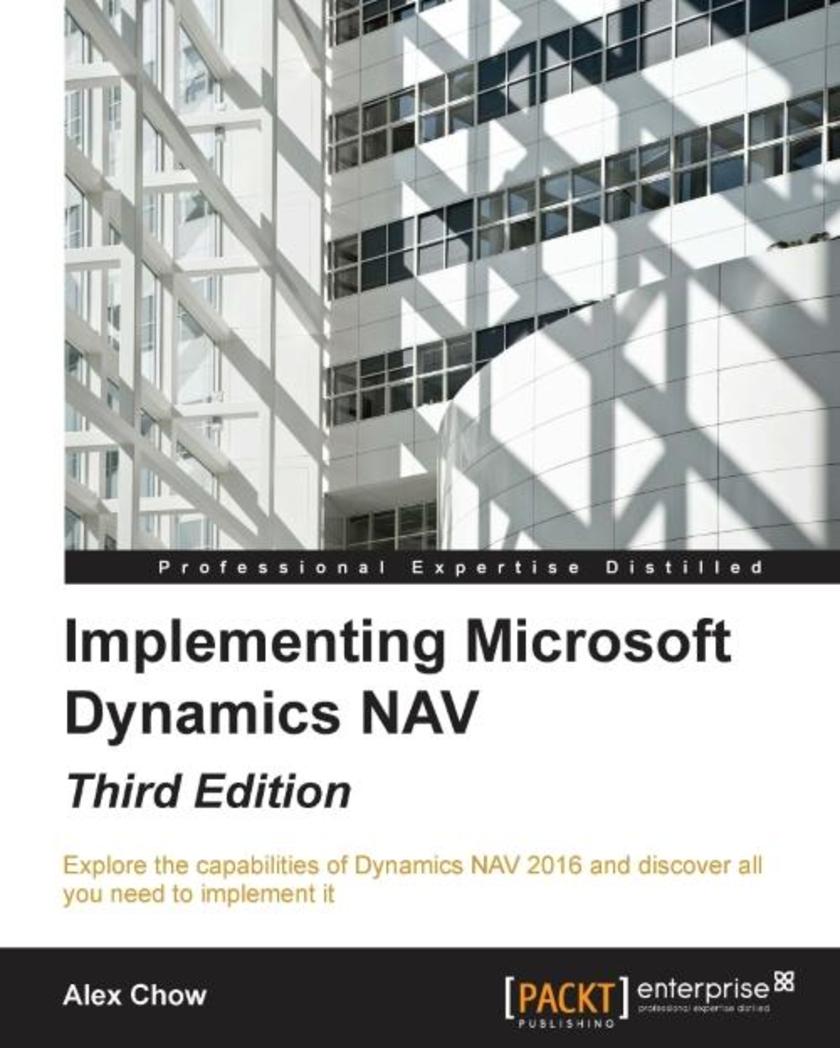
Implementing Microsoft Dynamics NAV - Third Edition
¥99.18
Explore the capabilities of Dynamics NAV 2016 and discover all you need to implement it About This Book Learn the key roles of your Dynamics NAV partner and the roles within your customer’s organization Create configuration packages and perform data migration on your own Find out how to troubleshoot your problems effectively with your Dynamics NAV partner Who This Book Is For This book is for Dynamics NAV partners and end users who want to know everything about Dynamics NAV implementations. It is aimed at those who want to be project managers or get involved with Dynamics NAV, but do not have the expertise to write code themselves. What You Will Learn Study the roles within a Dynamics NAV partner and within a customer’s company Create reusable data migration packages Work with the debugger to pinpoint error messages Get to grips with the key tables used in data reporting and analysis Successfully upgrade your installation to the latest version Manage and expand your existing installation with additional functionalities Explore the free third-party add-ons that can leverage your existing installation In Detail Microsoft Dynamics NAV 2016 is an Enterprise Resource Planning (ERP) application used in all kinds of organizations around the world. It provides a great variety of functionality out-of-the-box in different topics such as accounting, sales, purchase processing, logistics, or manufacturing. It also allows companies to grow the application by customizing the solution to meet specific requirements. This book is a hands-on tutorial on working with a real Dynamics NAV implementation. You will learn about the team from your Microsoft Dynamics NAV partner as well as the team within the customer’s company. This book provides an insight into the different tools available to migrate data from the client’s legacy system into Microsoft Dynamics NAV. If you are already live with Microsoft Dynamics NAV, this books talks about upgrades and what to expect from them. We’ll also show you how to implement additional or expanding functionalities within your existing Microsoft Dynamics NAV installation, perform data analysis, debug error messages, and implement free third-party add-ons to your existing installation. This book will empower you with all the skills and knowledge you need for a successful implementation. Style and approach This book is step-by-step guide to implementing Dynamics NAV from start to finish.
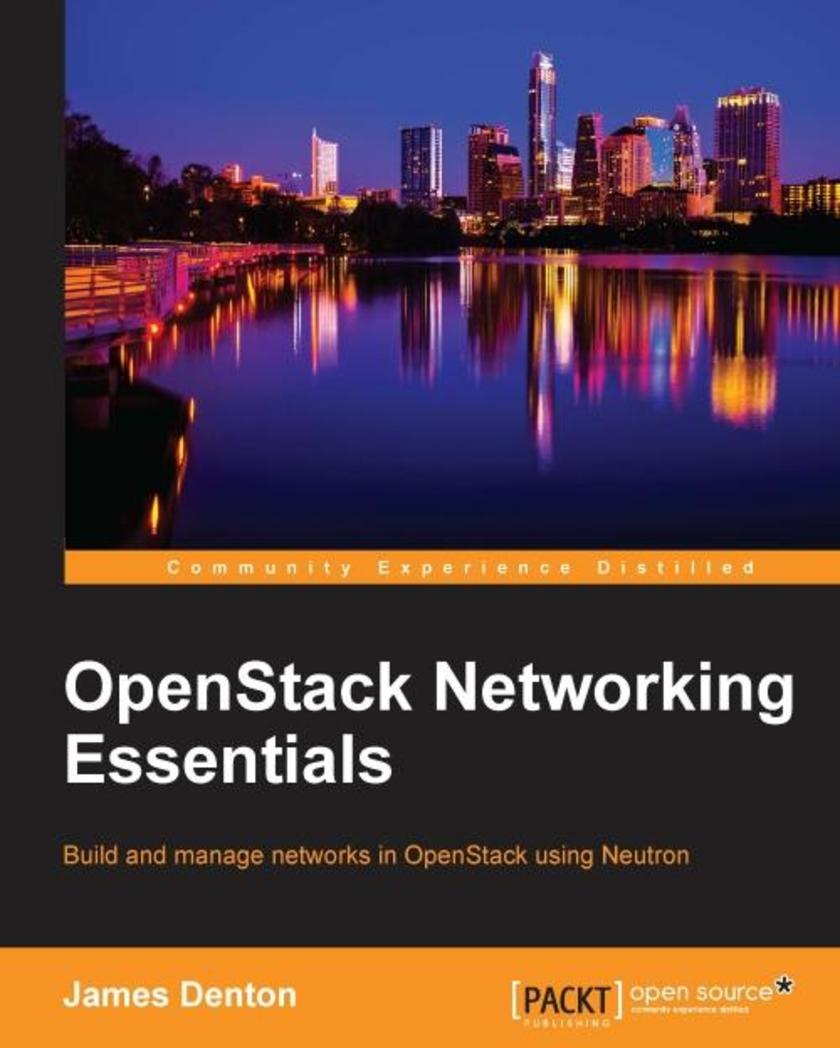
OpenStack Networking Essentials
¥71.93
Build and manage networks in OpenStack using Neutron About This Book Deploy an all-in-one cloud based on OpenStack Liberty (2015.2) using RDO Learn the fundamentals of the Neutron API including networks, subnets, and ports, and how to manage these resources in the cloud Build simple virtual network infrastructures in the cloud Who This Book Is For The book is for those who are new to OpenStack and Neutron who want to learn the cloud networking fundamentals and get started with OpenStack networking. Prior networking experience along with a virtual or physical server is recommended to follow along with the concepts demonstrated in the book. What You Will Learn Install the latest Liberty (2015.2) release of OpenStack using RDO in VirtualBox Discover the basics of the Neutron API, including networks, subnets, and ports Interact with Neutron using the CLI and Horizon dashboard Create networks and subnets that provide connectivity to instances Implement software routers that connect networks and provide network address translation Secure instances using Neutron's security group functionality In Detail The OpenStack Networking API offers users the ability to create and manage both basic and complex network architectures that blend the virtual and physical network infrastructure. This book kicks off by describing various components of Openstack Neutron and installing Ubuntu OpenStack based on Canonical's process. Further on, you will use various methods to interface with Neutron to create and manage network resources. You will also get to grips with the relationship between ports, networks, and subnets through diagrams and explanations, and see how the logical components are implemented via plugins and agents. Moving forward, you will learn how virtual switches are implemented and how to build Neutron routers. You will also configure networks, subnets, and routers to provide connectivity to instances using simple examples. At the end, you will configure and manage security groups, and will observe how these rules translate to iptables rules on the host machines. By the end of the book, you will be able to build basic network architectures using Neutron networks and routers in no time. Style and approach An easy-to-follow guide that covers the networking features of OpenStack and the core Neutron API components providing a solid foundation to deploy networks and instances.
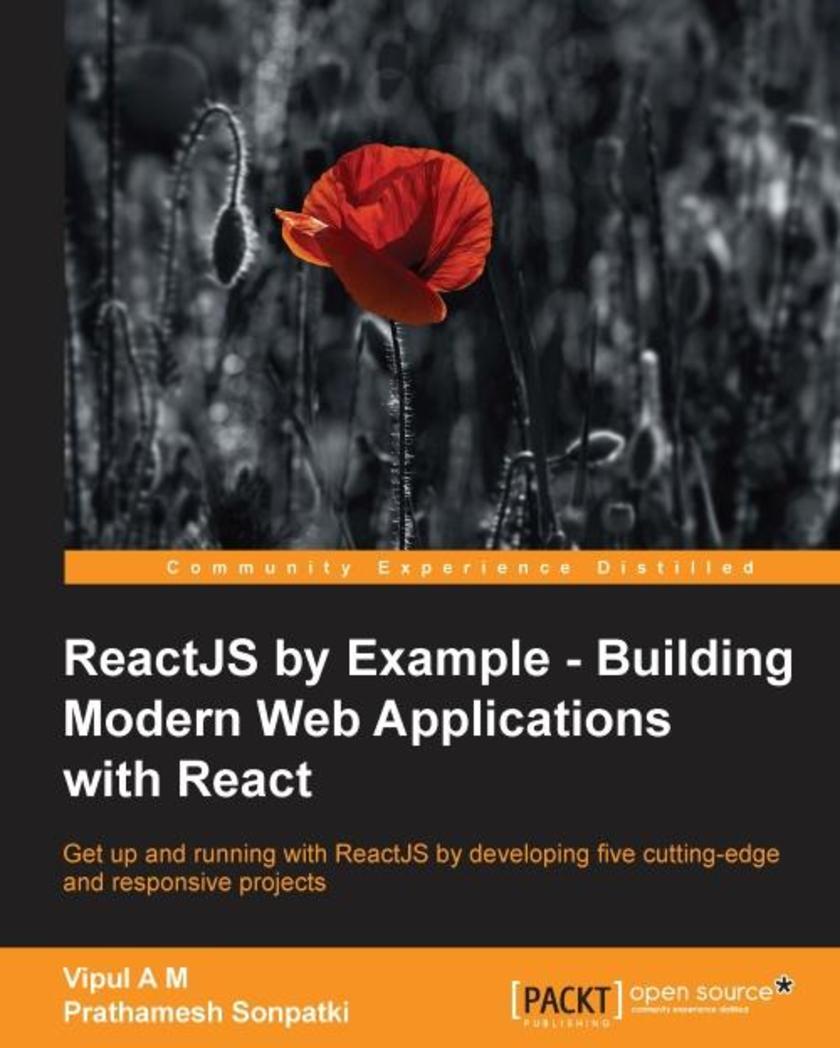
ReactJS by Example - Building Modern Web Applications with React
¥80.65
Get up and running with ReactJS by developing five cutting-edge and responsive projects About This Book Create pragmatic real-world applications while learning React and its modern developer tools Build sustainable user interfaces by transforming data into components of UI Learn how to generate reusable ReactJS components effectively Who This Book Is For If you are a web developer and wish to learn ReactJS from scratch, then this book is tailor-made for you. Good understanding of Java*, HTML, and CSS is expected. What You Will Learn Create, reuse, and compose React components using JSX Share data between various React components and techniques for data flow within a React app Handle user interactions with the help of event handlers and dynamic components Set up and use various next generation ES2015/ES6 features with React Understand the performance and immutability features of React using React add-ons Learn the techniques of Animation in React Use data stores to store model-related data and information Create a flux-based React application by using Reflux library In Detail ReactJS is an open-source JavaScript library that brings the power of reactive programming to web applications and sites. It aims to address the challenges encountered in developing single-page applications, and is intended to help developers build large, easily scalable and changing web apps. Starting with a project on Open Library API, you will be introduced to React and JSX before moving on to learning about the life cycle of a React component. In the second project, building a multi-step wizard form, you will learn about composite dynamic components and perform DOM actions. You will also learn about building a fast search engine by exploring server-side rendering in the third project on a search engine application. Next, you will build a simple frontpage for an e-commerce app in the fourth project by using data models and React add-ons. In the final project you will develop a complete social media tracker by using the flux way of defining React apps and know about the best practices and use cases with the help of ES6 and redux. By the end of this book, you will not only have a good understanding of ReactJS but will also have built your very own responsive frontend applications from scratch. Style and approach An easy-to-follow program to learn ReactJS with the help of real world projects. Each topic is explained within the context of a project and provides plenty of tips and tricks for using ReactJS.
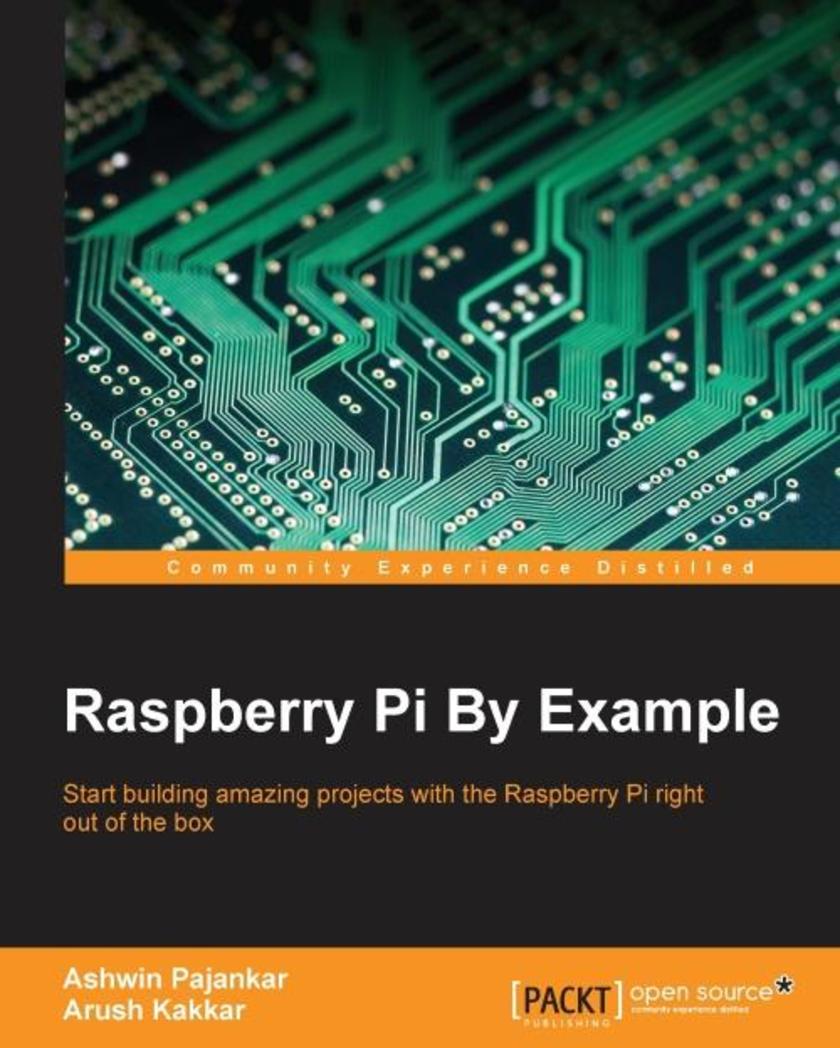
Raspberry Pi By Example
¥71.93
Start building amazing projects with the Raspberry Pi right out of the box About This Book Explore the vast range of opportunities provided by Raspberry Pi and other hardware components such as a webcam, the Pi camera, and sensors Get hands-on experience with coding, networking, and hardware with the Raspberry Pi platform Learn through ample screenshots that offer a play-by-play account of how to implement Raspberry-Pi-based real-life projects Who This Book Is For What's the best way to learn how to use your Raspberry PiBy example! If you want something exciting to do whilst getting to grips with what your Pi can offer, this is the book for you. With both simple and complex projects, you'll create a wide variety of cool toys and functions with your Raspberry Pi - all with minimal coding experience necessary. What You Will Learn Set up your Raspberry Pi and get it ready for some interesting real-life projects Work with images, videos, webcams, and the Pi camera and create amazing time-lapse videos Explore the amazing world of Minecraft Pi Get to know how to use PiGlow for GPIO programming Interface your Pi with Grove Sensors and implement IoT applications Build your own cluster with Raspberry Pi Understand the networking and network programming fundamentals In Detail Want to put your Raspberry Pi through its paces right out of the boxThis tutorial guide is designed to get you learning all the tricks of the Raspberry Pi through building complete, hands-on hardware projects. Speed through the basics and then dive right in to development! Discover that you can do almost anything with your Raspberry Pi with a taste of almost everything. Get started with Pi Gaming as you learn how to set up Minecraft, and then program your own game with the help of Pygame. Turn the Pi into your own home security system with complete guidance on setting up a webcam spy camera and OpenCV computer vision for image recognition capabilities. Get to grips with GPIO programming to make a Pi-based glowing LED system, build a complete functioning motion tracker, and more. Finally, get ready to tackle projects that push your Pi to its limits. Construct a complete Internet of Things home automation system with the Raspberry Pi to control your house via Twitter; turn your Pi into a super-computer through linking multiple boards into a cluster and then add in advanced network capabilities for super speedy processing! Style and approach This step-by-step guide to building Raspberry-Pi-based projects is explained in a conversational and easy-to-follow style. Each topic is explained sequentially in the process of creating real-life projects, and detailed explanations of the basic and advanced features of various Python libraries are also included.
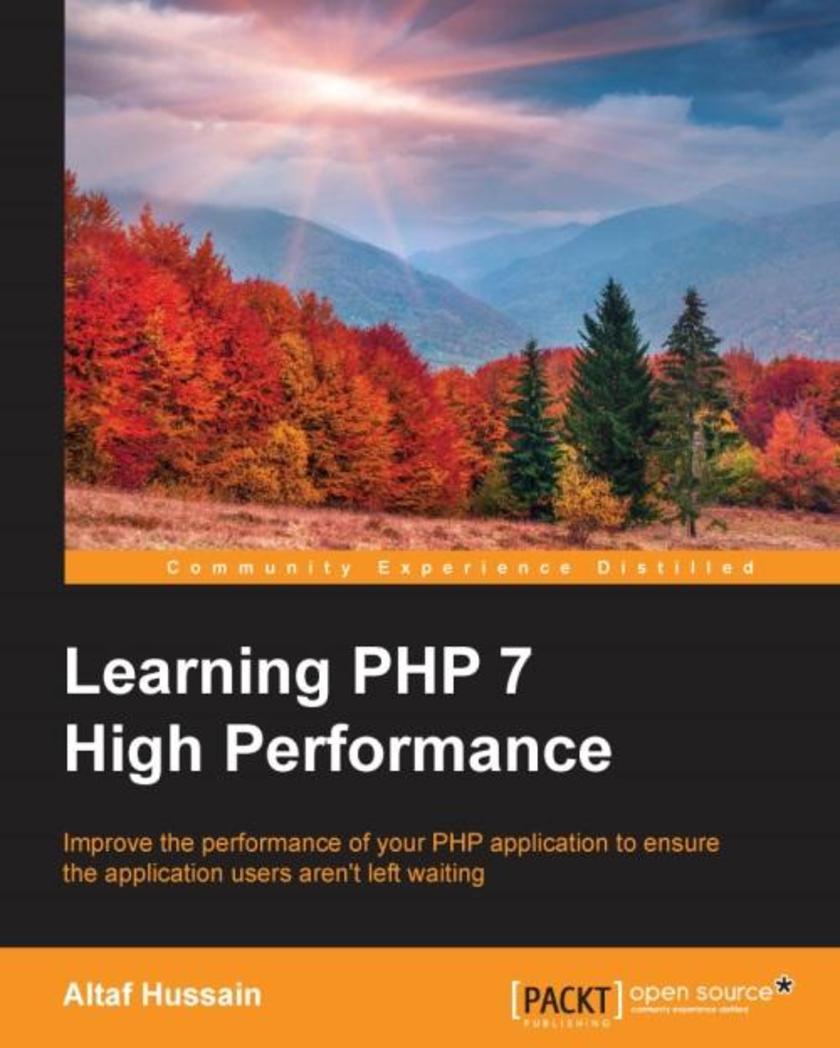
Learning PHP 7 High Performance
¥71.93
Improve the performance of your PHP application to ensure the application users aren't left waiting About This Book · Make the optimum use of PHP coding to improve your programming productivity · Leverage the potential of PHP for server-side programming, memory management, and object-oriented programming · Packed with real-life examples to help the readers implement concepts as they learn Who This Book Is For This book is for those who have basic experience in PHP programming. If you are developing performance-critical applications, then this book is for you. What You Will Learn · Setup high performance development and production environment for PHP 7 · Discover new OOP features in PHP 7 to achieve high performance · Improve your PHP applications' performance · Attain improved database performance · Benchmark PHP applications to optimize them · Write quality code by learning to improve code reusability, simplicity, and expressiveness · Get rid of the bottlenecks in your PHP 7 applications by writing PHP code optimally · Tackle issues related to web applications, such as high user dependency and large datasets In Detail PHP is a great language for building web applications. It is essentially a server-side *ing language that is also used for general-purpose programming. PHP 7 is the latest version, providing major backward-compatibility breaks and focusing on high performance and speed. This fast-paced introduction to PHP 7 will improve your productivity and coding skills. The concepts covered will allow you, as a PHP programmer, to improve the performance standards of your applications. We will introduce you to the new features in PHP 7 and then will run through the concepts of object-oriented programming (OOP) in PHP 7. Next, we will shed some light on how to improve your PHP 7 applications' performance and database performance. Through this book, you will be able to improve the performance of your programs using the various benchmarking tools discussed. At the end, the book discusses some best practices in PHP programming to help you improve the quality of your code. Style and approach The book is a step-by-step guide to improve the quality of your code in PHP through real-time examples. The book takes a practical approach to improving the quality of your code.




 购物车
购物车 个人中心
个人中心



